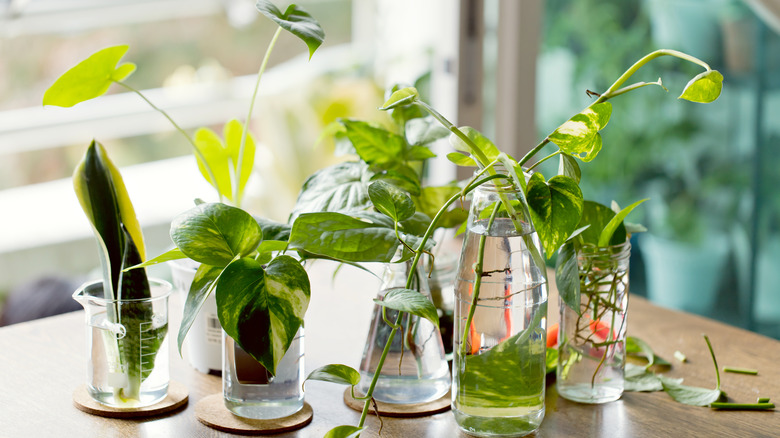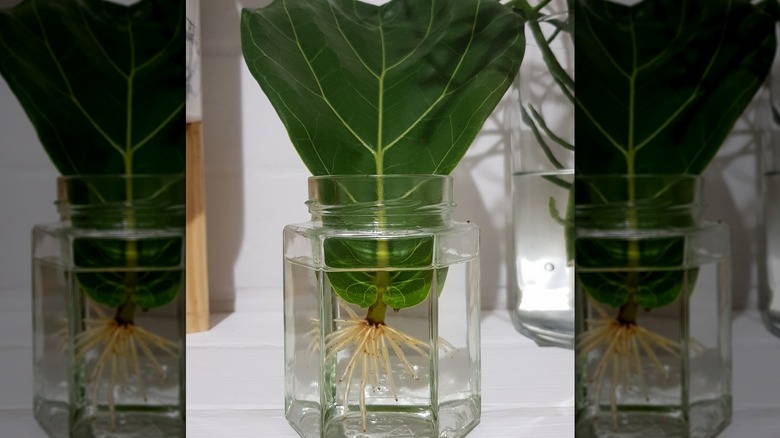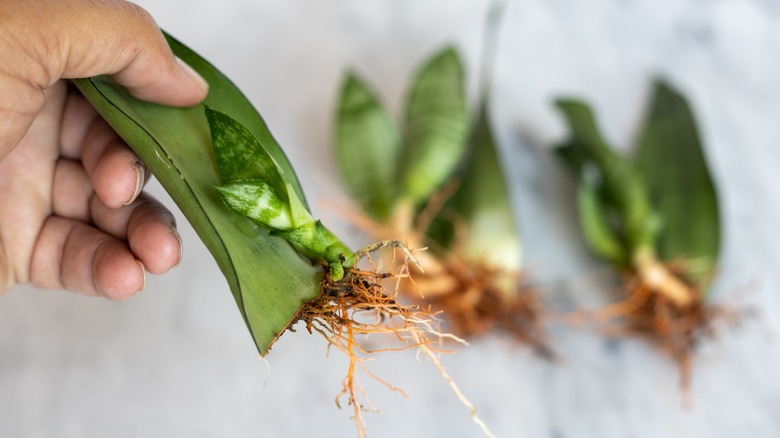Our Master Gardener Explains What Zombie Leaf Propagation Is And Why You Should Avoid It
It may sound like the premise of a second-rate horror film, but zombie leaf propagation is a real thing that can lead to significant frustration. While you won't have to worry about your rooted leaves coming to life and eating your brains, you will be disappointed in the results of this method. Zombie leaf propagation happens when a leaf produces roots without a node from which a plant can grow.
There are many tried and true methods of plant propagation. You can propagate many plants in water and others directly in soil. Some greenery multiplies by bulbs and others by root or stem cuttings. Layering — a method where the new plant grows roots while still attached to the parent plant – is an efficient option for many types of plants, especially large outdoor bushes. Many plants can be propagated using only leaves, but it's important to know which ones require special treatment to grow a new plant to avoid zombie leaf propagation
Avoiding zombie leaf propagation
As you work to expand your plant collection, indoors and out, it's tempting to take any leaf and stick it in water to see if it makes roots; however, just because it makes roots does not mean it can grow a fully formed plant. This situation is also called taking a "blind cutting," but it gets the zombie propagation moniker because the leaf can live a long time rooted in water without ever changing, like a "living dead" plant.
Most leaves trimmed off the parent plant without a node will not produce roots, but some popular plants like fiddle leaf figs and heart-shaped hoyas, are known for creating zombie leaves. You can place the stems of these plants in water and they may produce roots, but there is no place on those leaves that can expand to grow stems that produce new leaves. To propagate from a cutting, the plant must have a node or other method from which a cloned plant can grow.
Propagating healthy plants using only leaves
For every rule Mother Nature gives us, there are usually several exceptions. While rooting a single leaf of most plants in water will not result in reproduction, some plants can be propagated using only leaves -– no nodes needed. For example, sedums, hoyas, and African violets have a petiole, which is the part that connects the leaf to the node of a plant. Rooting a cutting in water with an intact petiole can produce a living plant.
Some plants with thick leaves can be propagated by leaf cuttings. Sansevierias are very easy to propagate by taking 3-inch cuttings from a healthy leaf and putting them in water, moist soil, or peat moss. In a few weeks, that leaf will produce roots, and before long, a baby plant will emerge. Another fascinating way to succeed at leaf propagation is by slicing the veins of plants like a rex begonia and placing it on top of your planting medium. Cover it with a sprinkle of soil and new plants will emerge from each cut. Perhaps this odd method should be called "Frankenstein" propagation!
The key to avoiding zombie leaf propagation is knowing the best way to clone your specific plant. A little research will help you expand your plant collection without wasting time on "living dead" plants.


